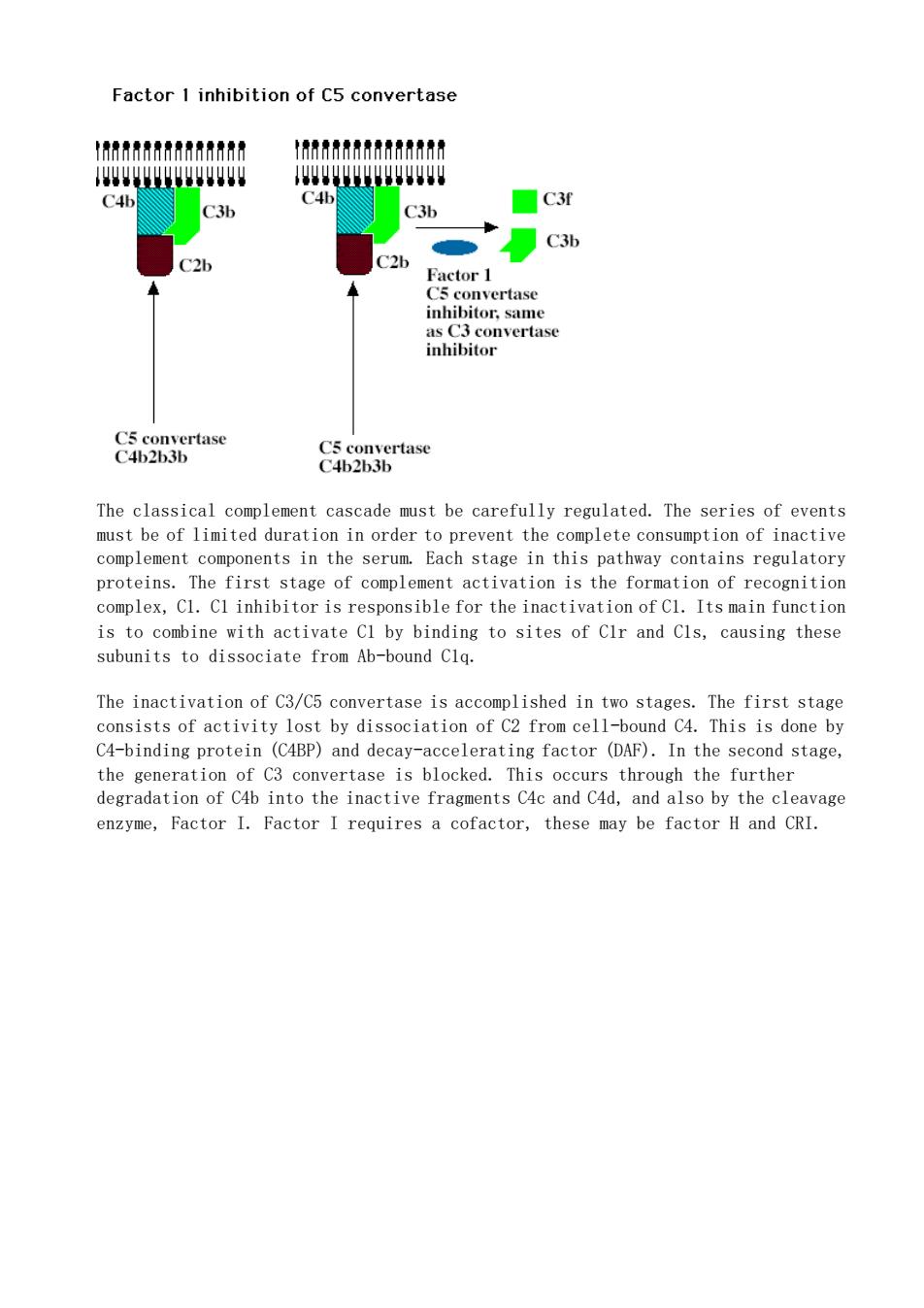正在加载图片...

Factor I inhibition of C5 convertase IABBBnB8888* 非典典典典青典A青青典典费典A EETTTEEEE 9 C4b C4b C3b C3b C3b C2b C2b Factor 1 inhibitor.same Cabapaprtase Capsrase The classical complement cascade must be carefully regulated.The series of events must be of limited duration in order to prevent the complete consumption of inactive complement components in the serum.Each stage in this pathway contains regulatory proteins. The first stage of complement activation is the formation of recognition complex,CI.Cl inhibitor is responsible for the inactivation of Cl.Its main function is to combine with activate Cl by binding to sites of CIr and Cls,causing these subunits to dissociate from Ab-bound Clq. The inactivation of c3/C5 convertase is accomplished in two stages.The first stage t by dissociation of C2 from cell- bound C4.This is done by CBP)and decay-accoleratimg factor (DAP).In the seond stare the generation of C3 convertase is blocked.This occurs through the further degradation of C4b into the inactive fragments C4c and C4d,and also by the cleavage enzyme,Factor I.Factor I requires a cofactor,these may be factor H and CRI.The classical complement cascade must be carefully regulated. The series of events must be of limited duration in order to prevent the complete consumption of inactive complement components in the serum. Each stage in this pathway contains regulatory proteins. The first stage of complement activation is the formation of recognition complex, C1. C1 inhibitor is responsible for the inactivation of C1. Its main function is to combine with activate C1 by binding to sites of C1r and C1s, causing these subunits to dissociate from Ab-bound C1q. The inactivation of C3/C5 convertase is accomplished in two stages. The first stage consists of activity lost by dissociation of C2 from cell-bound C4. This is done by C4-binding protein (C4BP) and decay-accelerating factor (DAF). In the second stage, the generation of C3 convertase is blocked. This occurs through the further degradation of C4b into the inactive fragments C4c and C4d, and also by the cleavage enzyme, Factor I. Factor I requires a cofactor, these may be factor H and CRI